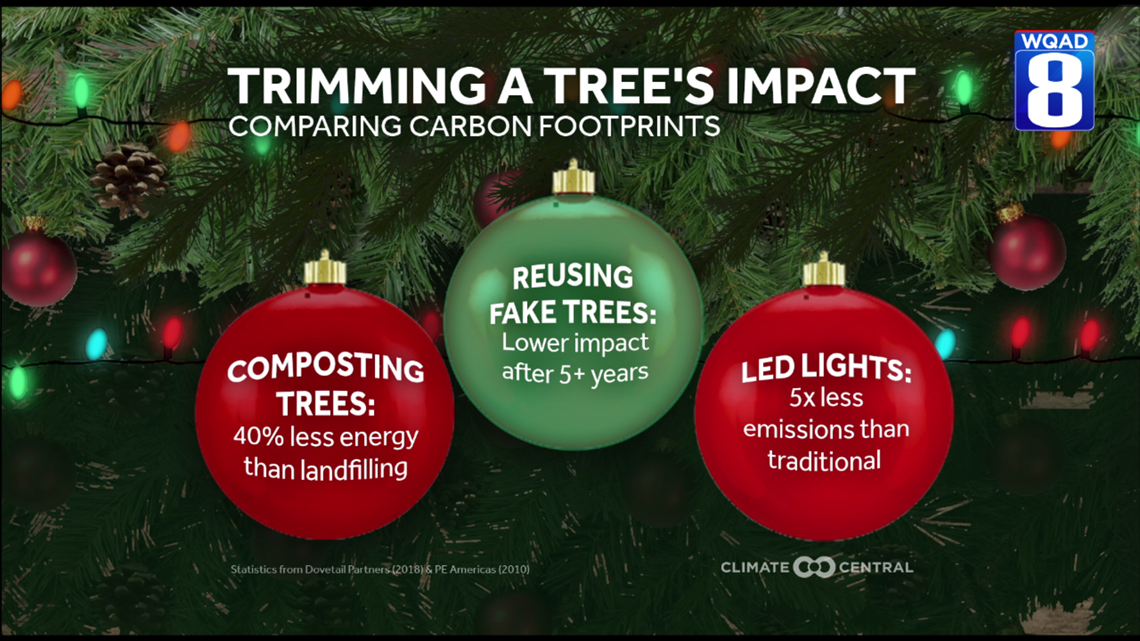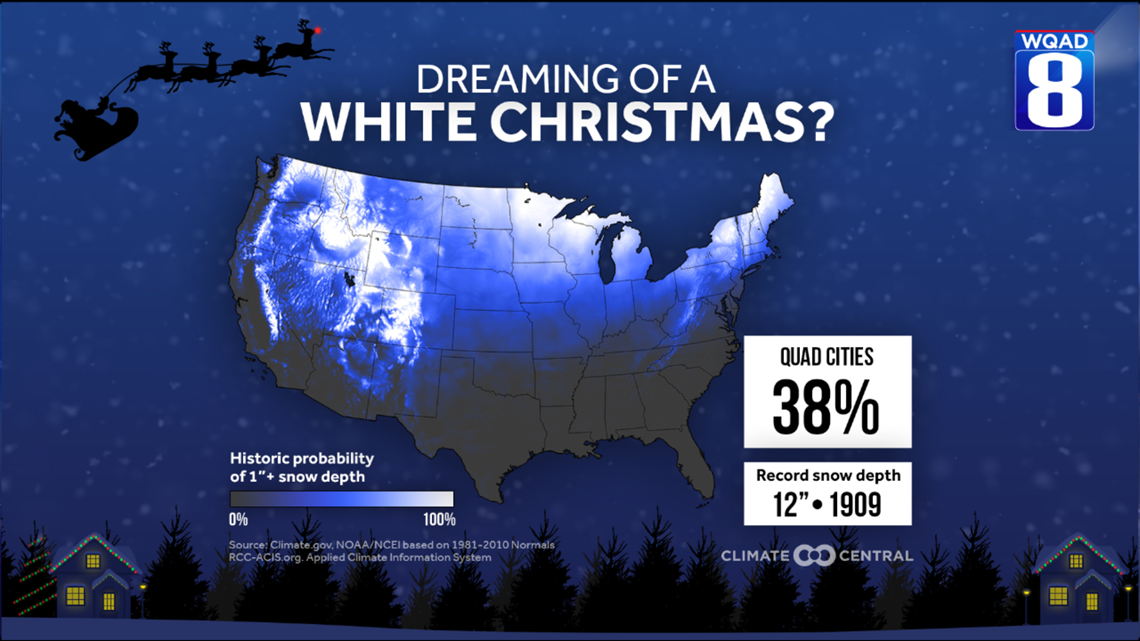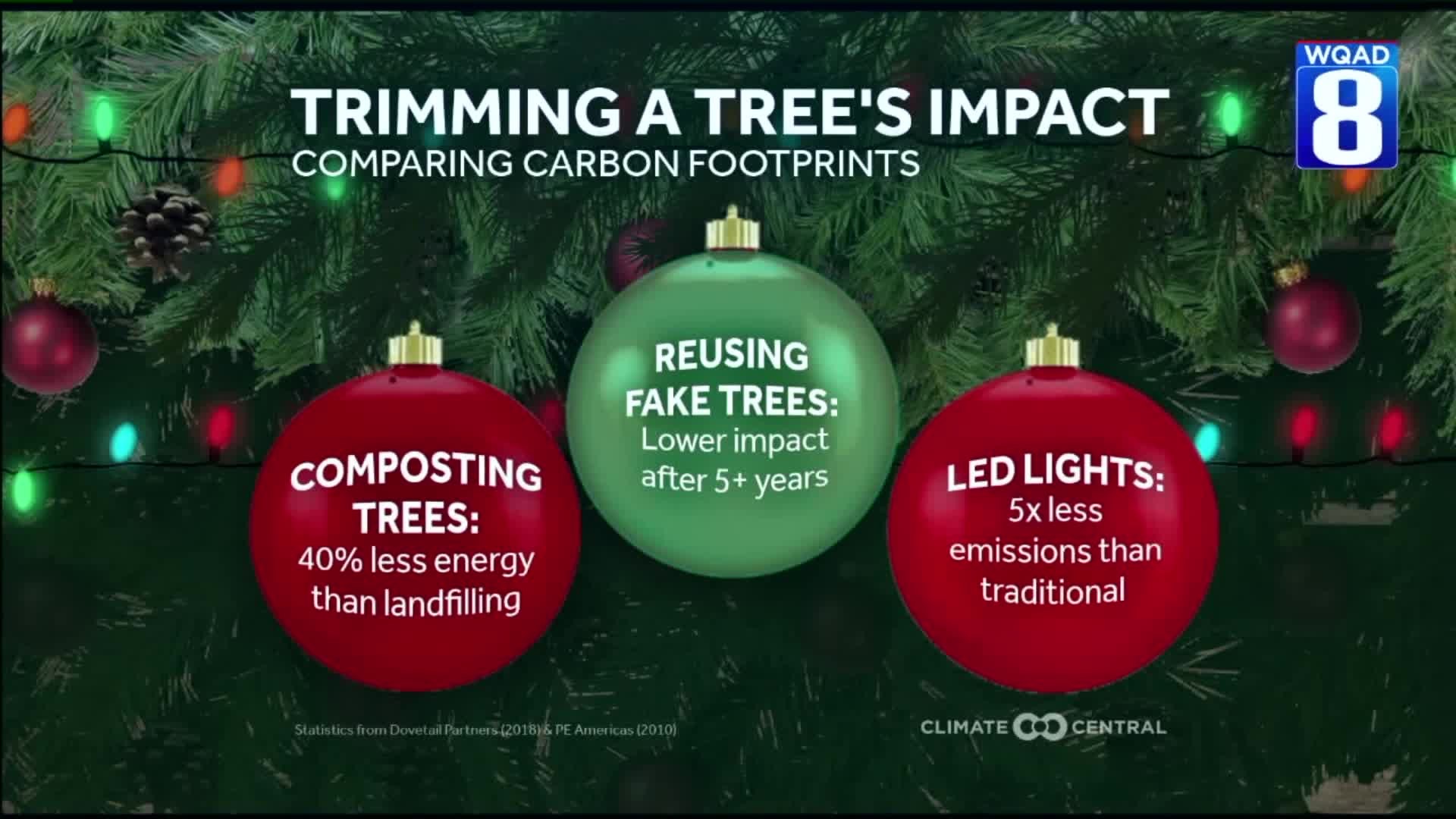Have you ever wondered which type of Christmas tree is better for the environment?
The answer may have to do with how long you keep an artificial tree and how far you travel to get your real tree (and what you end up doing with it).
Here's how it gets complicated: to assess the carbon footprints for each choice, a few things need to be considered—the full life cycle of trees, from farming or production, to transport, use and disposal.
Driving more than ten miles to get your real tree offsets the years the tree was living in the ground.


Artificial trees are better for the environment
When it comes to artificial trees, most are manufactured in China from PVC. Because of this, they have a much higher single-year footprint.
BUT, if your artificial tree is used for more than 5 years, the total footprints become comparable, according to new research, especially if you donate your tree after using it for 5+ years. That's the "reuse" part of the "reuse, reduce, or recycle" saying.
Goodwill accepts gently-used artificial trees, but may require the original box.
When it comes to decorating the tree?
There's another footprint that needs to be considered.
Today's LED lights use a lot less energy than the old bulbs. LED lights have one fifth the carbon footprint of traditional, incandescent lights, according to PE Americas.
Old strands may also be recyclable so consider that before dumping them in the trash.
As climate change affects Christmas tree availability, greening the holidays may require us using more artificial trees, but also holding onto them even if the trend or style may fade.


When it comes to White Christmases in the Quad Cities, we have a 38% chance every year.
This year, our chance is about zero, thanks to very warm weather. Warm weather is more the norm than the cold with the holiday averaging 3.2 degrees warmer than it was in the beginning of the 1970s.
-Meteorologist Eric Sorensen

